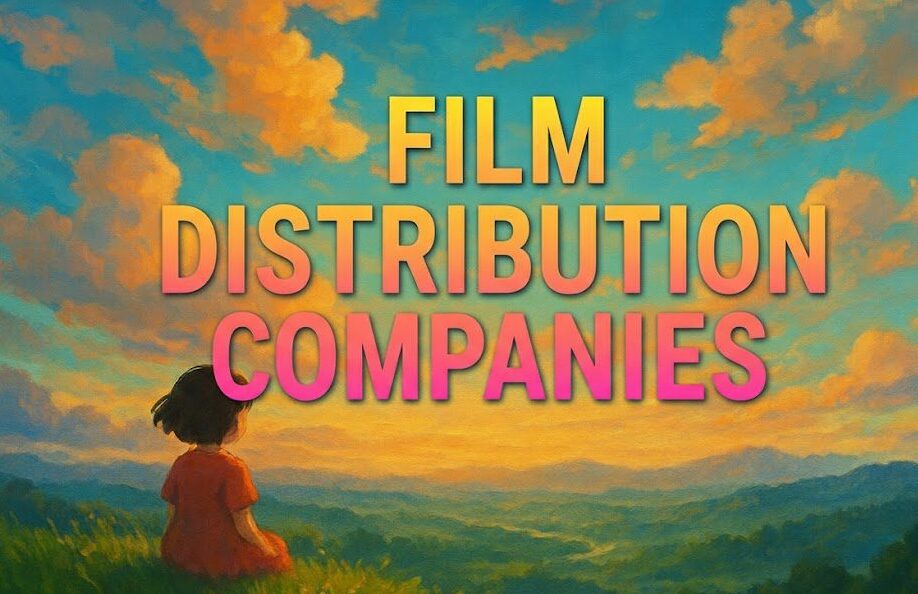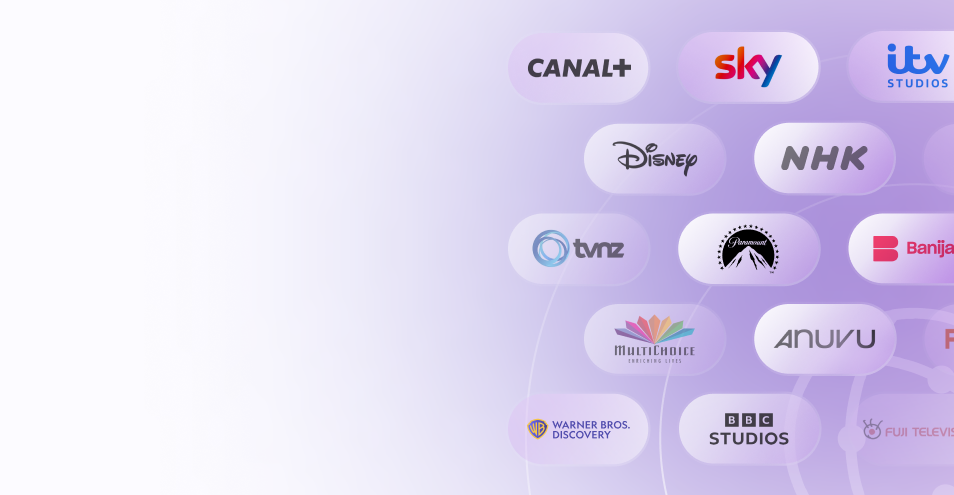Introduction
So, you’re ready to launch your very own streaming service! That’s fantastic. Bringing unique content to an eager audience is an exciting venture.
But before you dive headfirst into curating content and designing apps, let’s talk about something crucial: creating a solid budget for new streaming channel operations.
For Streaming Startups, a well-thought-out financial plan isn’t just a good idea; it’s the bedrock of sustainability and growth. This guide will walk you through the key areas to consider, step by step.
Table of content
- Introduction
- Key-Takeaways
- First Steps: Pre-Launch Budgeting for Your `Budget for New Streaming Channel`
- Content: The Core of Your `Budget for New Streaming Channel`
- Building Your Platform: Technology Stack Budget
- Making Noise: Marketing & Launch Budget
- Day-to-Day: Operational Costs for Your Streaming Channel
- Leveraging Vitrina for a Smarter `Budget for New Streaming Channel`
- Conclusion
- FAQs
Key Takeaways
| Budget Category | Key Consideration for Startups |
|---|---|
| Pre-Launch | Thorough market research and clear service scope are vital to avoid early missteps. |
| Content | Balancing licensed content costs with potential for originals; CDN and delivery are major factors. |
| Technology | The ‘build vs. buy’ decision for your platform significantly impacts initial and ongoing costs. |
| Marketing | Don’t underestimate Subscriber Acquisition Cost (SAC) and the need for sustained promotion. |
| Operations | Lean staffing is key initially, but plan for customer support and maintenance. |
| Data-Driven Decisions | Using resources like Vitrina can help make more informed spending choices. |
Unsure About Streaming Startup Expenses?

First Steps: Pre-Launch Budgeting for Your `Budget for New Streaming Channel`
Before you even think about content libraries or app designs, there are foundational costs.
Getting this stage right in your budget for new streaming channel planning is crucial. These early investments set the stage for everything that follows.
Defining Your Vision & Scope: How It Shapes Your Budget
What kind of streaming service are you building?
A niche platform for horror fans? An educational service for kids?
Your service scope and target audience will heavily influence every line item.
A broader service might need more content and marketing spend, while a niche one might have higher content acquisition costs for specific genres but more targeted marketing.
- What is your unique selling proposition (USP)?
- Who is your ideal subscriber?
- What monetization model will you use (e.g., SVOD, AVOD, TVOD, or a hybrid)?
- What geographical regions will you target initially?
Essential Early Costs: Legal, Business Setup, and Market Research
These are the nuts and bolts.
You’ll need to budget for business incorporation, any necessary trademarks, and initial legal consultations to ensure you’re compliant. Don’t skimp on market research either.
Understanding your potential audience, competitors, and pricing sensitivities is vital for a startup.
| Expense Category | Potential Cost Driver |
|---|---|
| Legal & Business Registration | Company formation, legal advice, compliance checks. |
| Market Research & Analysis | Surveys, competitor analysis tools, consultant fees. |
| Initial Financial Planning | Accounting software, financial modeling consultation. |
| Branding Basics | Logo design, initial brand guidelines (can be lean). |
Content: The Core of Your `Budget for New Streaming Channel`
Content is what will attract and retain your subscribers.
This is often the largest ongoing expense category in a budget for new streaming channel, so careful planning is essential.
Sourcing Your Library: Licensed Content vs. Original Productions
You have two main paths:
licensing existing content or producing your own original content.
Licensing can be faster to market but involves costs like minimum guarantees (MGs) or revenue sharing agreements.
Originals can create a strong brand identity and exclusivity but require significant upfront investment in production.
- Analyze the cost-per-hour for licensed content versus potential ROI.
- Consider exclusivity: exclusive content often costs more but can be a major draw.
- Factor in the duration of content rights and renewal costs.
- For originals, budget meticulously for pre-production, production, and post-production.
Delivery & Management: Encoding, Storage, and CDN
It’s not enough to have great content; you need to deliver it flawlessly.
This means budgeting for video encoding (preparing files for streaming), secure storage, and a reliable Content Delivery Network (CDN) to ensure smooth playback for users globally or regionally.
These costs often scale with viewership and library size.
| Component | Description | Cost Factor |
|---|---|---|
| Video Encoding/Transcoding | Converting video files into various streaming formats and qualities. | Volume of content, output resolutions. |
| Cloud Storage | Storing your master video files and transcoded versions. | Amount of data stored (GB/TB). |
| Content Delivery Network (CDN) | Distributing video content from servers close to users for fast playback. | Bandwidth used (GB/TB), geographic reach. |
| Digital Asset Management (DAM) | Organizing and managing your media library (optional for very small startups). | Software subscription, features. |
Building Your Platform: Technology Stack Budget
Your streaming platform is your digital storefront.
The technology choices you make will significantly impact your budget for new streaming channel, user experience, and scalability.
To Build or To Buy? Weighing Platform Development Options
This is a major decision for any Streaming Startup.
Do you build a custom platform from scratch, or use a white-label (SaaS) solution? Building offers maximum control but is expensive and time-consuming. White-label solutions get you to market faster and can be more budget-friendly initially, but offer less customization.
- Custom Build: Higher upfront cost, longer development time, full control, unique features.
- White-Label Solution: Lower upfront cost, faster launch, limited customization, recurring fees.
- Consider your team’s technical expertise and long-term vision.
Crafting the Experience: Website & App Development Costs
Regardless of build or buy, you’ll need a user-friendly interface.
Budget for UI/UX design and development for all target platforms: web browsers, iOS apps, Android apps, and potentially Smart TV apps (e.g., Roku, Fire TV).
The more platforms and features, the higher the cost.
Protecting Content & Users: DRM and Security
Digital Rights Management (DRM) is crucial for protecting licensed content from piracy. You’ll also need to budget for overall platform security, including data protection for your users. These are not areas to cut corners.
| Technology Area | Key Budget Considerations |
|---|---|
| Platform Core (Build/Buy) | Development team/agency costs OR SaaS subscription fees. |
| Website & App Development | Number of platforms, feature complexity, UI/UX design. |
| DRM Implementation | Licensing fees for DRM solutions (e.g., Widevine, FairPlay, PlayReady). |
| Payment Gateway Integration | Setup fees, transaction fees. |
| Analytics & Reporting Tools | Subscription costs for user behavior and performance tracking. |
Planning Your Channel's Financial Future?

Making Noise: Marketing & Launch Budget
You can build the best streaming service in the world, but if no one knows about it, it won’t succeed.
Your marketing budget for new streaming channel needs careful planning, especially for a startup aiming to make an impact.
Creating Buzz: Branding and Pre-Launch Marketing
Start building anticipation before you launch! This includes costs for brand identity development (logo, style guide), a coming soon landing page, and initial social media or PR efforts.
A strong pre-launch can significantly reduce your day-one acquisition costs.
- Develop a clear brand message and visual identity.
- Engage with potential early adopters on social media.
- Consider teaser content or behind-the-scenes glimpses.
- Build an email list for launch announcements.
Acquiring Your First Subscribers: Understanding SAC
Subscriber Acquisition Cost (SAC) is a critical metric.
Budget for activities like digital advertising (social media ads, search ads), content marketing, public relations, and potentially influencer collaborations. Track your SAC closely to optimize spending.
Sustaining Growth: Ongoing Marketing Efforts
Marketing doesn’t stop at launch.
You’ll need an ongoing budget for content promotion, SEO, email marketing, and community engagement to continue growing your subscriber base and reduce churn.
| Marketing Phase | Typical Activities | Budget Focus |
|---|---|---|
| Branding & Pre-Launch | Logo design, website, social media setup, initial PR. | Brand assets, awareness building. |
| Launch Campaign | Paid ads, influencer marketing, launch promotions. | Driving initial subscriptions (SAC). |
| Ongoing Marketing | SEO, content marketing, email marketing, retention campaigns. | Sustainable growth, reducing churn. |
Day-to-Day: Operational Costs for Your Streaming Channel
Once you’re live, ongoing operational costs will kick in.
These are essential for keeping your service running smoothly and your subscribers happy. Factoring these into your budget for new streaming channel is vital for long-term viability.
Your Team: Staffing and HR Expenses
Even a lean startup needs people. Consider costs for key roles, whether full-time, part-time, or freelance.
This could include content management, technical support, marketing, and customer service. Early on, founders might wear many hats.
- Content acquisition/curation.
- Technical operations and platform monitoring.
- Marketing and social media management.
- Customer support (can start with basic tools).
Keeping Subscribers Happy: Customer Support
Good customer support can reduce churn. Budget for tools (helpdesk software, FAQs) and potentially personnel as you grow. Prompt and helpful support is a key differentiator.
Smooth Operations: Maintenance, Updates, and Transaction Fees
Your platform will need ongoing technical maintenance and updates.
Software licenses, hosting, and payment gateway transaction fees are also recurring costs. Don’t forget these less glamorous but essential expenses.
| Operational Area | Example Costs |
|---|---|
| Staffing (Lean) | Salaries/freelance fees for essential functions. |
| Customer Support Tools | Helpdesk software subscriptions. |
| Platform Hosting & Maintenance | Server costs, software updates, security patches. |
| Payment Processing Fees | Percentage per transaction or fixed fees. |
| Software Licenses | Analytics, email marketing, project management tools. |
Leveraging Vitrina for a Smarter `Budget for New Streaming Channel`
For Streaming Startups, making every dollar count in your budget for new streaming channel is paramount.
This is where having access to the right data and insights becomes invaluable. Vitrina provides a global B2B data platform for the Media & Entertainment industry, which can significantly inform your budgeting process.
For instance, by exploring Vitrina’s Project Tracker, you can get a sense of content production and acquisition trends, helping you estimate content costs more accurately.
Furthermore, Vitrina’s Solution allows you to discover and vet potential technology vendors, service providers, and even content partners, enabling you to compare options and potentially find more cost-effective solutions.
Understanding market rates for various services or content types can prevent overspending and help you negotiate better deals.
- Research typical content licensing fees for your niche.
- Identify potential technology partners and compare their offerings.
- Benchmark your planned spending against industry trends (where available).
- Discover cost-effective service providers for encoding, marketing, or legal support.
| Vitrina Feature/Data | How It Helps Your Startup Budget |
|---|---|
| Content Deal Data | Estimate licensing costs, understand valuation for originals. |
| Vendor Discovery (Tech, Services) | Find and compare providers to get competitive quotes. |
| Market & Competitive Intelligence | Inform spending priorities based on market demands and competitor activities. |
| Partnership Identification | Find potential co-production or distribution partners to share costs. |
Conclusion
Creating a comprehensive budget for new streaming channel is a journey, not a one-time task. It requires research, realistic assumptions, and a willingness to adapt as your startup grows.
For Streaming Startups, a detailed financial plan is your roadmap to navigating the exciting but challenging landscape of online video. By carefully considering each cost category and leveraging resources like Vitrina for data-driven insights, you’ll be much better positioned to launch smartly and build a sustainable streaming service.
Ready to build a smarter budget with the best M&E industry intelligence?
Get started with Vitrina today and empower your streaming startup with the data it needs to succeed!
Frequently Asked Questions
Often, it’s marketing and subscriber acquisition. Many startups focus heavily on content and tech, underestimating the ongoing investment needed to attract and retain viewers in a competitive market. Another commonly underestimated cost can be the ongoing expense of content delivery (CDN bandwidth), which scales directly with your success.
Startups can explore revenue-share deals instead of large upfront MGs for licensed content, focus on a very specific niche to reduce the volume of content needed, acquire non-exclusive rights initially, or leverage library content and public domain works if appropriate for their niche. User-generated content (if applicable to the model) can also be a low-cost option.
Yes, it’s possible, but it requires being extremely lean and making smart trade-offs. This might mean using a cost-effective white-label platform, focusing on a highly targeted micro-niche, relying on organic marketing initially, and the founders handling multiple roles. Scalability and feature richness might be limited at first.






































